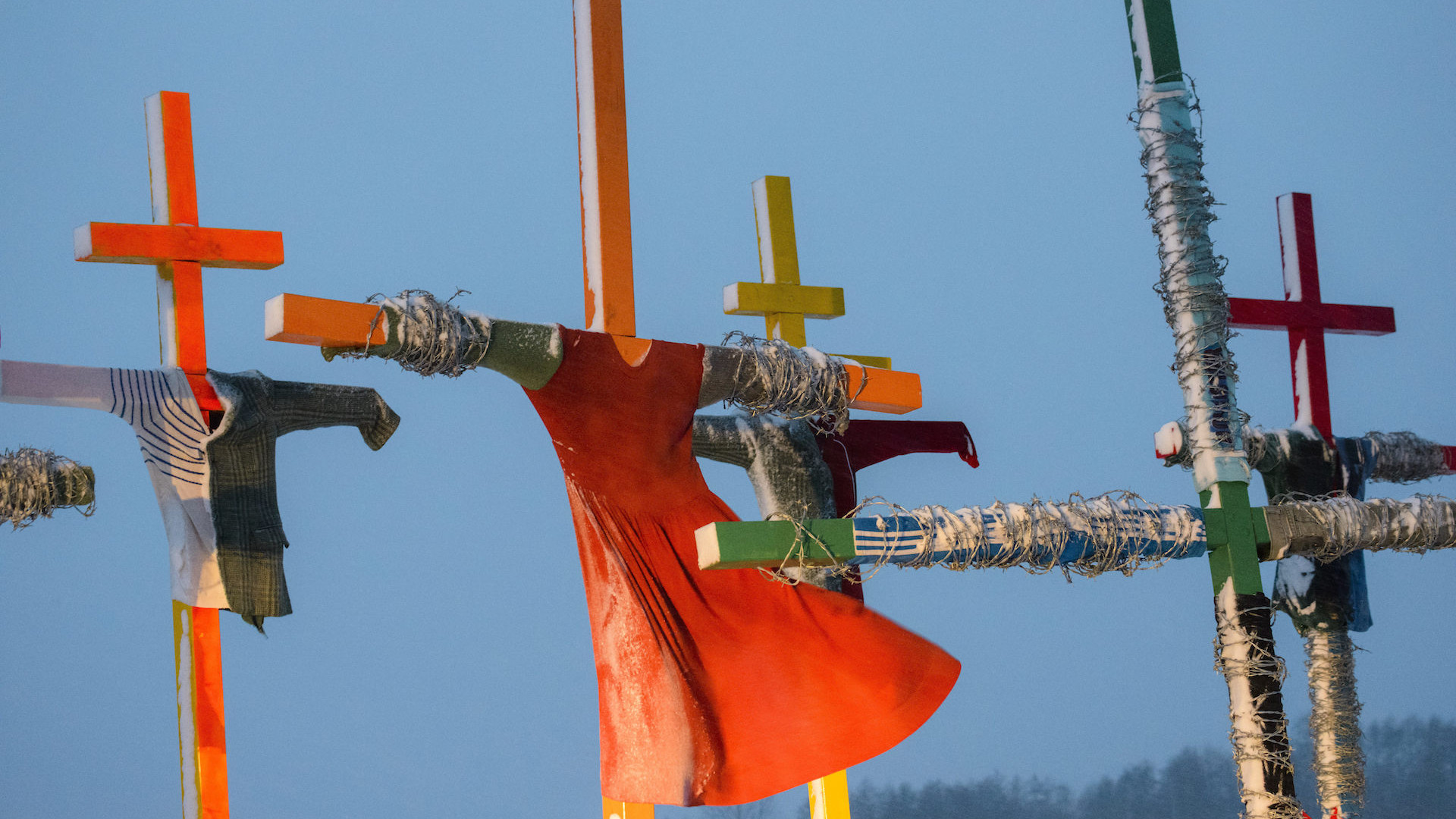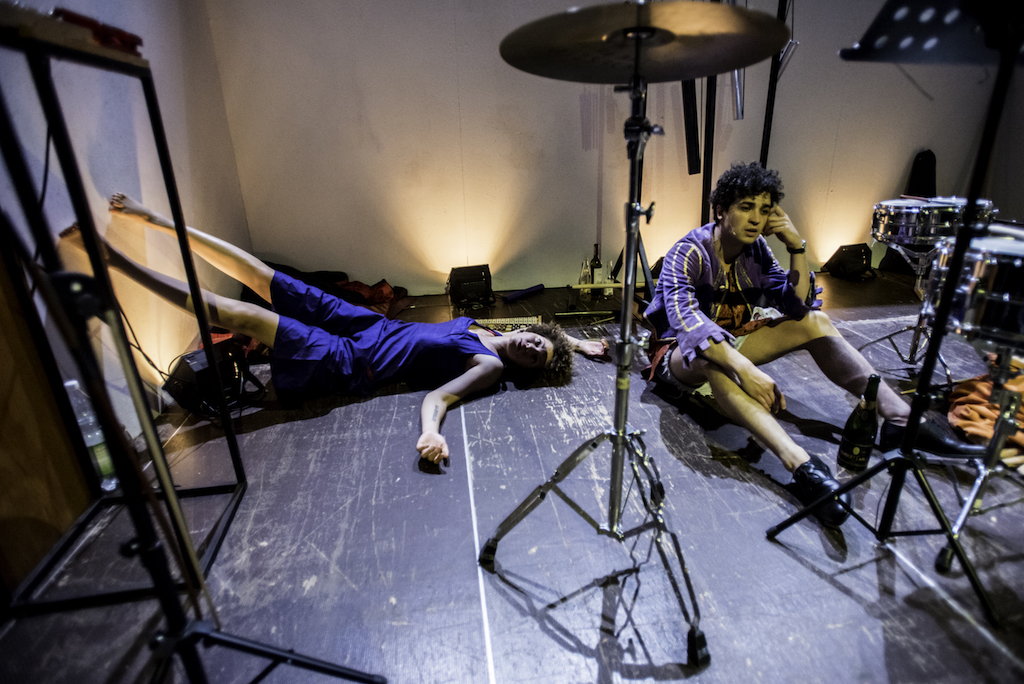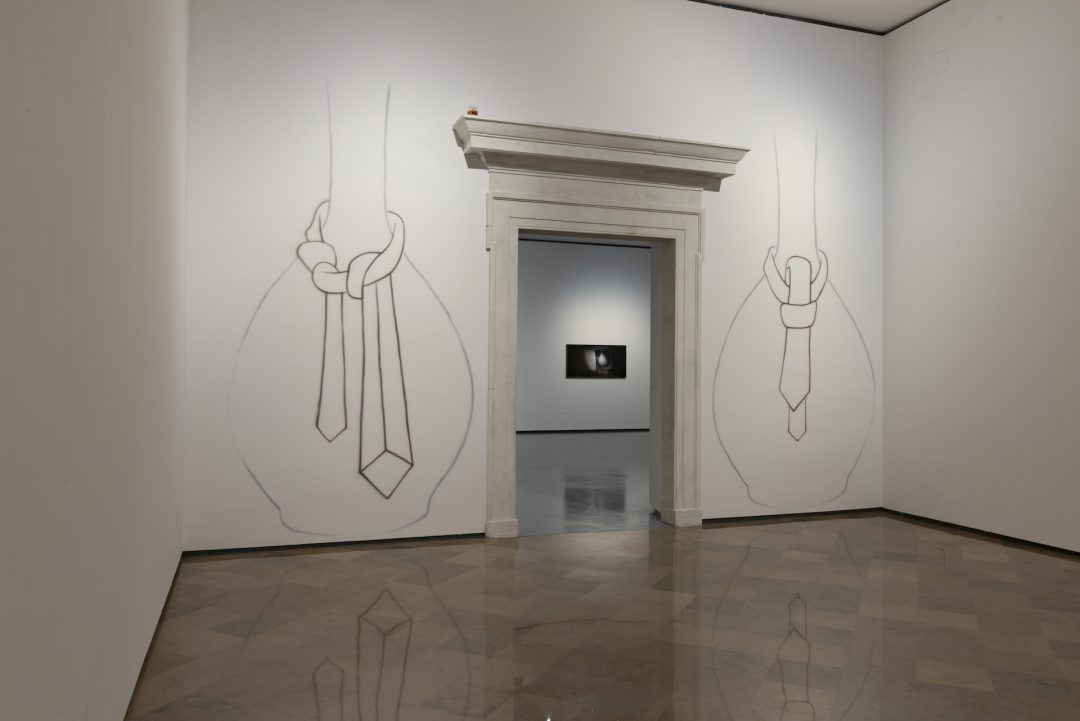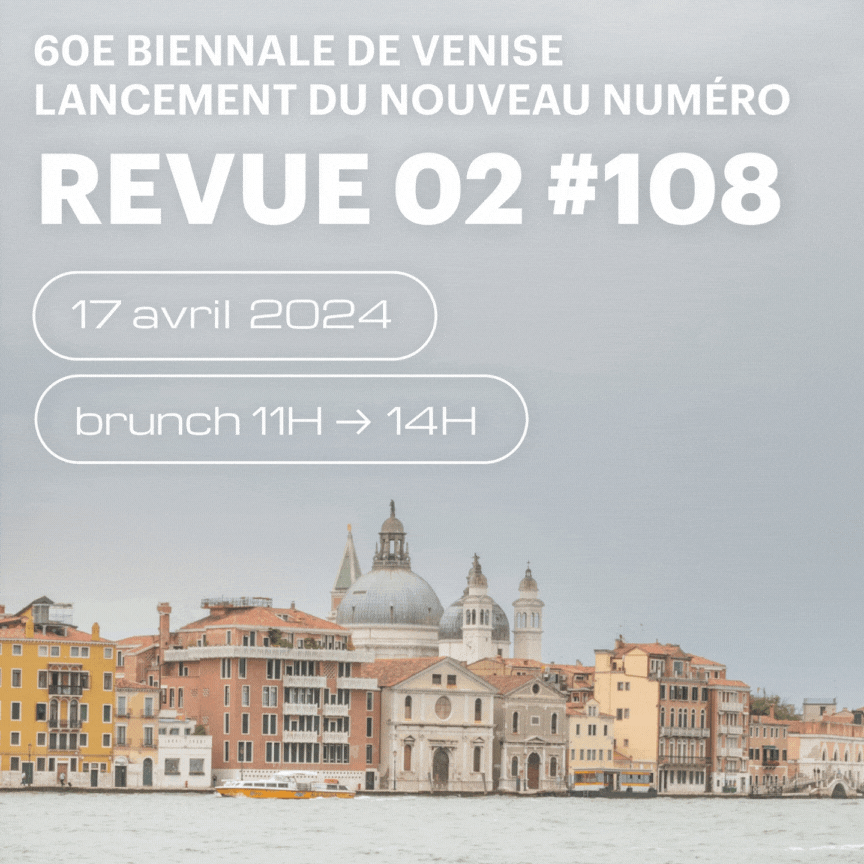Non-fiction Poland

For three decades now, Polish art has been progressing in a “united and cohesive” way, stoutly driven by the revolutionary manifesto of the 1980s. Several stages, obstacles and crises have punctuated its history. Artists have responded by an activist appeal to wild, immediate and spontaneous experiments. Those changes reveal that, in all instances, there is change, and that that change is perhaps, nay, is surely not just artistic, but political, too. All the probably real aspects of today’s art are signs of an upheaval in political life itself. Art deals with this transition, in its own way and using its own techniques, based on its history. It is up to critics and theoreticians to identify what might enable them to understand the actual process producing this change, and the material and ideal way in which it is experienced, assumed, and feared, by one and all. We might underscore the fact that the set of ideological certainties that made it possible to clearly know where people were situated in politics and in art, in the happy era when there were clear and decisive positions, is no longer possible today, when the capitalist and liberal system is finding its adversary in populism, thus proposing nothing less than a step backwards.
Is such a return possible? The Polish government seems to think it is, talking as it does about a nation martyrized by history; it preaches a new world power. Even if, by remaining in the hands of conservative and communitarian forces, the country is closing in on itself more and more, and consequently drawing the front lines in all the other areas of social, artistic and symbolic life, artists are still tirelessly creating artwork. For the art arena and the political sphere are going through exactly the same issues, and the same crisis, and are precisely the object of the same kinds of questioning.
The cycle of events called “The Anti-Fascist year”1, organized by various Polish collectives, tried to put on the agenda the social, economic and cultural transformation of the last few decades. Different proposals, including last year’s proffered by the Museum of Modern Art in Warsaw, have shown a noteworthy maturity. “Never Again. Art against War and Fascism in the 20th and 21st Centuries”2, an exhibition devised for the most part using historical works, summoning three close-ups: Guernica and the 1930s, the exhibition “Arsenal” and the 1950s, as well as contemporary art and (post-)fascism. The exhibition held to mark the 80th anniversary of the outbreak of the Second World War reassured us, in the obviousness that the relations between politics and art are inseparable. Luckily, artists are still reinventing the means whereby the go-between function of the political and the artistic may broaden the field of “sharing the perceptible”. They are not inventing a new political model by putting the go-between function on a par with the re-definition of the world and changes in the figure of the universal. Art is accruing the role and the collective weight of the apparatus through which is carried out this connection to the outside, in a possible field of action and reflection.3
Between the new figures of both past and future, which are suddenly emerging, we must make room for the new status of the present. This can be put very simply: an artistic present is emerging through this twofold dislocation that separates the present, on the one hand, and the past of tradition, and, on the other, the future as progress, excessive and destructive growth, much commented on by ecological analysis. When, in his great disarray in the face of the situation in Poland, Adam Mazur writes: “The field of art has been ploughed and made subordinate to politics”,4 he wants to alert us. The Polish government is still sacking the directors of art centres and theatres, or making it possible to put two management jobs in the hands of a single (female) expert, but if Polish art is suffering from this, it is not because it is weak. And even if it is difficult to compare the resignation of the director of the national museum in Warsaw with that of Warren Kanders of the Whitney Museum in New York, it must be noted that the protests of the artists and publics who gave rise to them were similar. Like protests which play a critical and urgent part, the militant activities of artists and their actions are managing to separate ideology from aesthetics, where art, which is neither political, and even less so ideological, is defending its autonomy.

The Daniel Rycharski (b. 1986) exhibition in Nice has recently given France a glimpse of Polish art. “La Goutte creuse la pierre”5 was his first retrospective abroad, held, it just so happens, at the Villa Arson. In it, Vera Icon, a pyramid made of discarded clothes abandoned by migrants illegally crossing the Franco-Italian border, rubbed shoulders with three cages made by Rycharski with his father, a welder by trade, using two wrought-iron gateways and barriers, so typical of farms in the polish countryside. These cages have the shape of three village churches that the artist spent time in: Sierpc, Kurowo and Gazdowo, and are placed on a pile of earth partly coming from his native region. They symbolize the capacity of the Church to fashion and subdue minds. Further on, the Double Christ, formed by two male bodies entwined on a cross, is hung from the ceiling. Overtly displaying a gay identity in a country which has problems recognizing non-heterosexual sexual orientations, in the countryside, what is more, where this difference is perceived with even more difficulty, and presenting themes associated with the rural world and its traditions, Rycharski’s work strikes us by its daring. Not shrinking from attacking the figure of Christ, which he permits himself to reposition in iconoclastic poses, the artist shows himself to be, at the very least, courageous, both in his work but also in his everyday life, which he thus openly describes. When, all the same, some of his pieces display an exaggerated symbolism, they manifest a certain form of necessity and immediacy in the message. Klaudia Podsiadlo, one of the exhibition’s curators, writes: “Rycharski takes the risk of confronting the demons which haunt Polish society, and which the present government, with the help of the overweening power of the catholic church, is bringing dangerously back to life: xenophobia, nationalism, homophobia, and anti-semitism”.6 In the same year, the Rycharski exhibition titled “Strachy”7 [Fears] was held at the Museum of Modern Art in Warsaw. His emblematic work, a series of scarecrows made with the inhabitants of the countryside he’s from, also shown in Nice, was initially installed in fields near the artist’s village. Made with clothes worn by LGBT people, those scarecrows are meant to deter. Their shape puts birds to flight while their smell keeps mammals away: the classical symbolism of the scarecrow is duplicated by an allusion to sexual differentiation, a source of embarrassment, not to say revulsion.
Still at the Museum of Modern Art in Warsaw, with the exhibition “ Paint, also known as Blood. Women, Affect and Desire in Contemporary Painting”,8 painting, which is at once expressed and banned, is not presented as a prohibition, nor as the transgression of a genre, rather it unites the two.
Polish art has its centres in large cities but also in peripheral areas, which fully contributes to its prosperity. In the Arsenal art centre, located in Bialystok, in the outer reaches of the European Union, you can always see the works of Georgians, Ukrainians, and Belarusians. For several years now, its director, Monika Szewczyk, has been organizing The Rise of Eastern Culture festival; in it, in 2019, she presented the Ukrainian painter Włada Rałko (b. 1969).9 Her large-format paintings are filled with hybrid figures composed of people, animals and objects. Associated with the current political situation, they represent a distinct and original declaration about the events of Ukraine’s history, a country that is suffering a great deal from the totalitarian legacy of the USSR.

Karol Radziszewski’s (b. 1980) work often seems like a slightly desperate endeavour, in which the desire to fight against the hatred targeting LGBT people has long been a central dimension. If woes and intimidation have indeed been the driving force behind this oeuvre, it would not be legitimate to reduce it just to them. His exhibition “The Power of Secrets”10, at the Ujazdowski Castle contemporary art centre, is being presented at a moment of political upheaval at the institution, with the controversial arrival of a new director. One of the rooms, devoted to the Queer Archive Institute (QAI) created by the artist, displays the queer identity of Eastern Europe. Karol Radziszewski likes rewriting Polish art history and risking upsetting canonical truths. His film Prince, describing the working methods of the famous director Jerzy Grotowski, is the first Polish artwork to assail the authority of the artist and playwright. It was screened in the Krzysztof Garbaczewski exhibition “Field Investigations”, held at the Arsenal in Bialystok.11 Garbaczewski (b. 1983) is a theatre director who goes beyond historical scripting, while regarding the genesis of theatre itself as a ritual. “Field Investigations” dealt with the alienation of man in his natural environment, when, submerged by technology, he takes part in a new disillusionment with the world.
Grotowski’s ghost reappears in the spectacle created by Katarzyna Kalwat (b. 1978) in collaboration with the set designer Zbigniew Libera. This hybrid form, a sort of “archival dramaturgy”, gathered critics and actors around a table to discuss Grotowski’s major influence. Grotowski Non Fiction 12 is a spectacle in which encounter becomes a book with no writing in it, describing the life of the person who has produced a mythology in order to wittily transgress the pathos of the individual horizon. In another spectacle titled Robert Walser, I would prefer not to13, Kalwat celebrates a theatre without any representation, or rather a stage without any spectacle, or theatre, or anything to look at… For Kalwat, visibility—here, theatre—is always what is separated from itself, bringing about the human voice. But what is a stage where there is nothing to see? It is a place where the spectator offers himself as spectacle, and, in it, will do away with the difference between the actor and himself, the represented and the representer, the object looked at and the subject onlooking.

For Staff Only,14 Katarzyna Kalwat employed strangers who describe on stage how they have not managed to work in Polish theatre because their mastery of the Polish language was not perfect. The spectacle ends with a question: is presence on stage already an art? If people stop talking, will they become free? And will they still be actors? Everything depends on the way they talk. A word which encompasses three risks—talking to say nothing, talking without knowing why, and talking without being understood—circulates in the spectacle between actors and spectators. A word looking for its “ignorant master”, the person who, without translating it, knows how to get it across. The language of art is translation. This multilingualism enables the actors to act. In the spirit of Dada, this spectacle, orchestrated by foreign rhythms, presupposes the equality and not the hierarchy of languages. Kalwat seems to be saying that language is in no way an instrument of communication, that it is, as in Finnegans Wake, quoted in its spectacle, invariably symbolic, introverted, ostensibly oriented towards a secret side of language. As creation, language is never separated from the faith in art. It declares itself from a certainty, that involving the inestimable pleasure of looking at works, reading books, and listening to music. Language as a refuge and as a star-studded firmament of the possible. I have a language and it is not mine.
Maria Loboda (b. 1979) is an artist of words, which she causes to topple over into the object when language reaches its verbal limits. Her show, also at Ujazdowski Castle, titled “Sitting Here Bored Like a Leopard”,15 will act as an example for us. Its title comes from Sylvia Plath’s poem Leaving Early. A bored and lazy predator causes a feeling of calm and threat, though the lethal danger is not expressed by tension, but by boredom. Loboda offers us a sensual, subtle and exciting image of this. Her sculptures and drawings, with their manipulated forms, ask us to slow down and dwell on their names. They recount stories which are intertwined and steal away, from a vase with a tie knotted around it to a full glass, lost on a parapet. We can lean against these large sculptures; are they fragile or not? Are they solid or not? Illusion pushes us to test them, and settle our curiosity. Here is a beetle, in a fold of fabric.

The identity of Polish art is invariably described in the categories of “representation” or “image”, in the host of insides and outsides, of the original and the derivative. Polish art is not an art involving a given prejudice, or an error centrally located on the map. It forms a necessary structure in the movement which is here recognized under the name of art of the East. The western interpretation of the East informs the fields of political experience, practice, and knowledge, up to the ultimate form of the question: “What is Polish art?” In analyzing works which the politics of these past few years have filled with signs, it is important to also demonstrate the most current and sometimes the most unperceived effects, to finally free them from that vision based on the Berlin boundary. This is only possible by way of a systematic shift of eyes and ears, in order, in effect, to answer this question. In the words of Olga Tokarczuk, who won the Nobel prize for literature in 2018: “Because of Poland’s geographic position between powerful neighbours in the middle of Europe, close to a variety of cultures, a lot of foreign words have seeped into Polish. It is unusual compared with other languages in that up to about 70 per cent of the Polish lexis consists of words borrowed from other languages. Thus it is a composite language, a patchwork language, a melting pot and a Mischsprache. We took words from our neighbours because of the business we were conducting with them, because of wars, journeys, fashions and obsessions.”16
1 The Anti-Fascist Year is a country-wide initiative promoted by a coalition of public institutions, NGOs, social movements, art collectives, individual artists and activists. Its goal is to commemorate all anti-fascist activists, men and women, who actively resisted fascism in the past, and to oppose the reoccurrence in the public domain of neo-fascist and neo-Nazi movements as well as of any and all parties endorsing and idolizing fascist ideas, discourse and practices. https://rokantyfaszystowski.org/en/
2 “Never Again. Art against War and Fascism in the 20th and 21st Centuries”, Museum of Modern Art, Warsaw, 30.08 – 17.11.2019, curated by: S. Cichocki, J. Mytkowska, L. Ronduda, A. Urbanska.
3 Zbigniew Libera, Art of Liberation, Studium prasoznawcze 1988–2018, published by Ujazdowski Castle, 2019.
4 Adam Mazur, “Lepiej juz bylo”, in Dwutygodnik, strona kulturaly, 12, 2019.
5 Daniel Rycharski, “La Goutte creuse la pierre”, Villa Arson, Nice, 15.11.2019 – 12.01. 2020, curators: K. Podsiadlo, A. Zuk.
6 Klaudia Podsiadlo, quotation from an unpublished text.
7 Daniel Rycharski, “Strachy”, Museum of Modern Art, Warsaw, from 15.02 – 22.04.2019, curator: Sz. Maliborski.
8 “Paint, also known as Blood. Women, Affect and Desire in Contemporary Painting”, Museum of Modern Art, Warsaw from 07.06 – 11.08.2019, curator: N. Sielewicz.
9 Włada Rałko, “The Phantom of Liberty ”, Arsenal, Bialystok, 29.08.2019 – 06.10.2019 as part of the festival The Rise of Eastern Culture/Another Dimension.
10 Karol Radziszewski, “The Power of Secrets”, Ujazdowski Castle in Warsaw, 15.11.2019 – 29.03.2020.
11 Krzysztof Gorbaczewski, “Field Investigations”, 20.01 – 17.03.2019, Arsenal, Bialystok.
12 Katarzyna Kalwat and Zbigniew Libera, Grotowski Non Fiction, screenplay by K. Szekalski and actors, curator: J. Zielińska, première on 4.01.2019, WRO, Wroclaw.
13 Katarzyna Kalwat, Robert Walser. I would prefer not to, script: Beniamin Bukowski, premiere at the Ujazdowski Castle, Warsaw, in October 2018.
14 Katarzyna Kalwat, “Staff Only”, script: B. Bukowski, music : W. Blecharz, June 2019.
15 Maria Loboda, “Sitting Here Bored Like a Leopard”,Ujazdowski Castle, 12.04 – 22.09.2019.
16 “Nobel Laureate Olga Tokarczuk on Polish: ‘A Language With an Eternal Hunger’” https://www.the-low-countries.com/article/nobel-laureate-olga-tokarczuk-on-polish-a-language-with-an-eternal-hunger
Image on top: Daniel Rycharski, Epouvantails, 2018–2019. Installation, found objects. Exhibition view of Fears, MOMA Warsaw, 15.02-22.04. 2019. Photo : Daniel Chrobak.
Related articles
Exhibition-Making as Practice (A Journey)
by Agnès Violeau
The techno-vernacular movement (part.2)
by Félicien Grand d'Esnon et Alexis Loisel Montambaux
The techno-vernacular movement (pt.1)
by Félicien Grand d'Esnon et Alexis Loisel Montambaux


